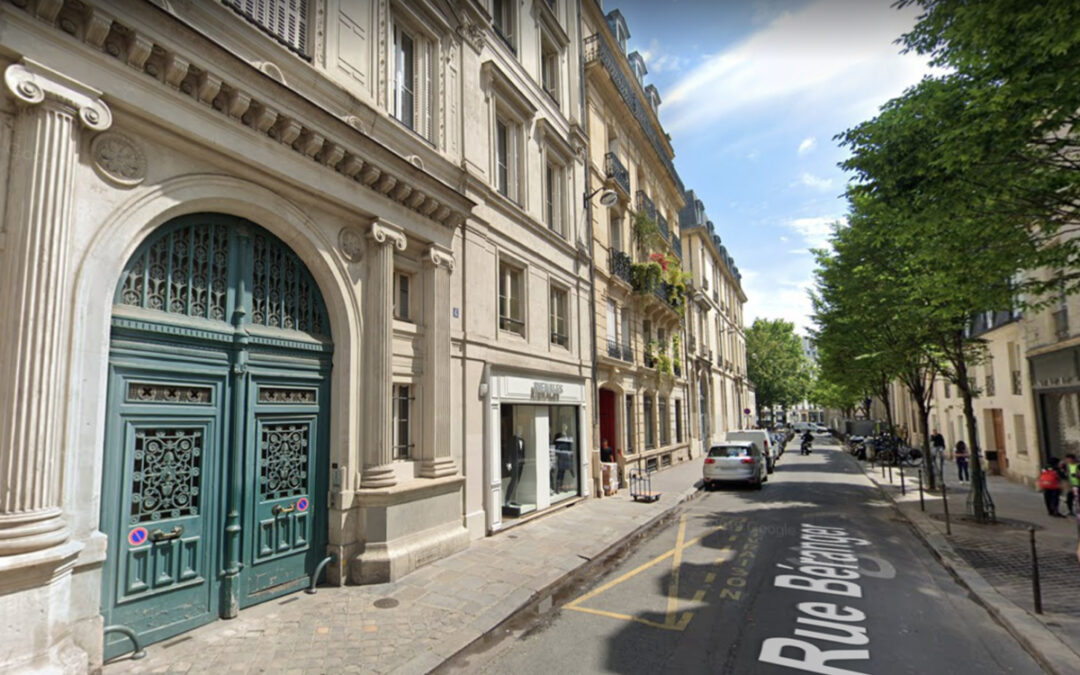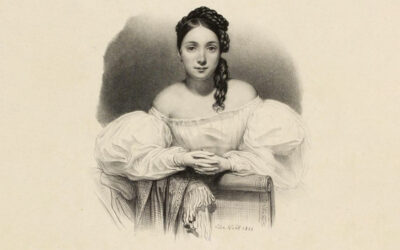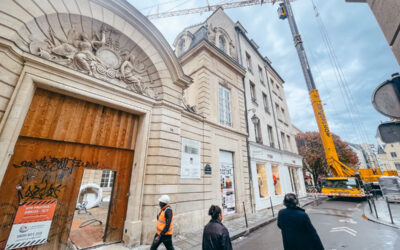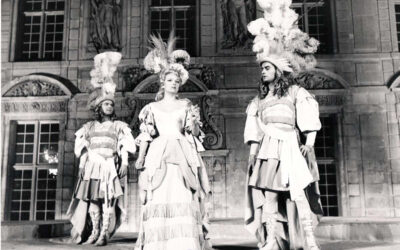In the time of Covid-19, the empty streets of the Marais resemble a science fiction setting. But for those who don't live there and, also, for indigenous people who have taken refuge in the countryside, the neighborhood still remains accessible thanks to the Marais Mood and... Google Street View!
Nostalgic for Paris, Djiefssi, an artistic director confined to the west of France, chose to stroll through the streets of the Marais. Let us follow this Rousseauist observer in his “ daydreams of a confined walker ". First stage : Béranger Street.

We enter rue Béranger, arriving via Place de la République. Despite the gloomy weather, a young man is getting ready to surf, like us.
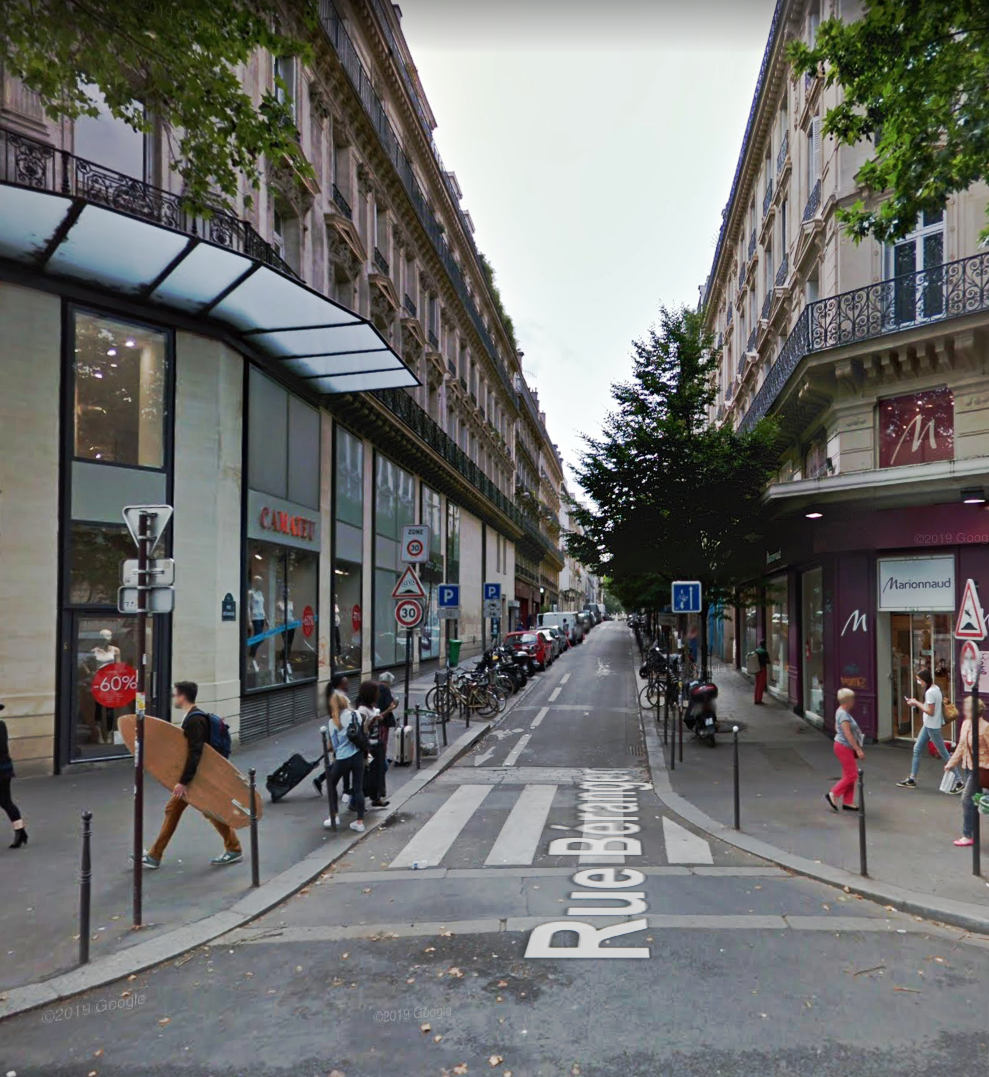
Suddenly, miracle! A ray of sunlight illuminates the street. The explanation for this meteorological change is simple, the view below was taken a few days later.
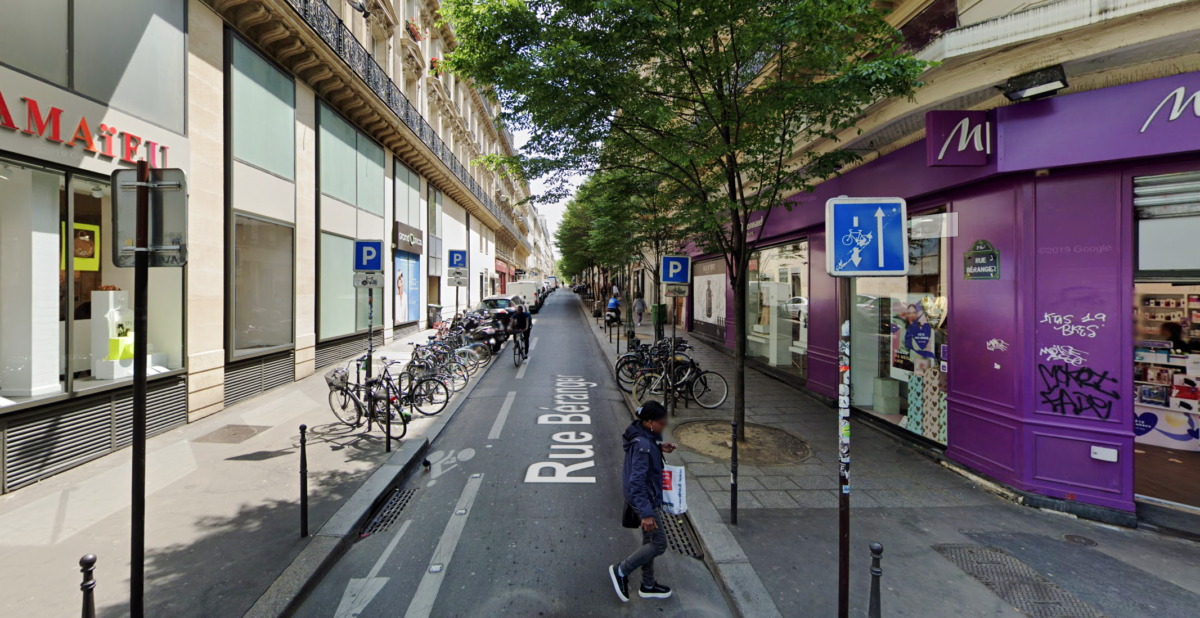
On our left, at 22, a discreet restaurant with a strange name. According to Wikipedia, this address housed, in 1878, a toy store, in which a large quantity of mercury fulminate intended for children's primer guns was stored. The stock exploded. The disaster left fifteen people dead and eighteen injured. Two houses were destroyed.
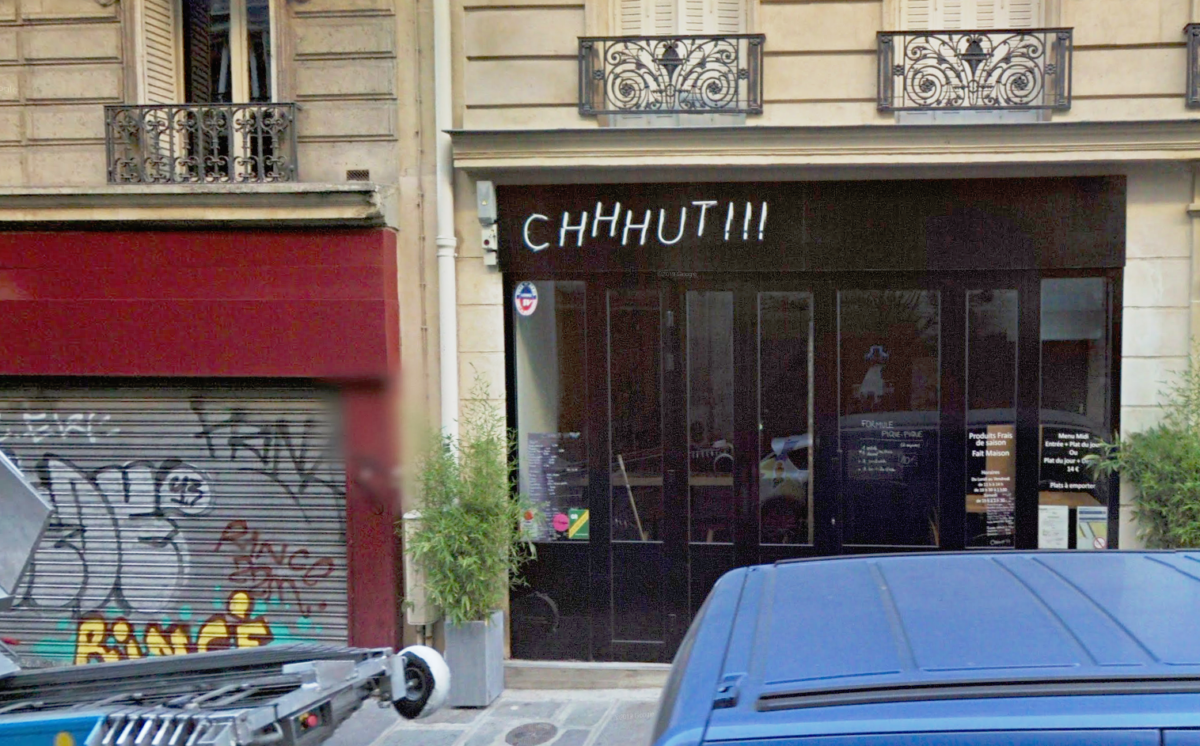
Intrigued, we retrace our steps: the name of the restaurant has changed:
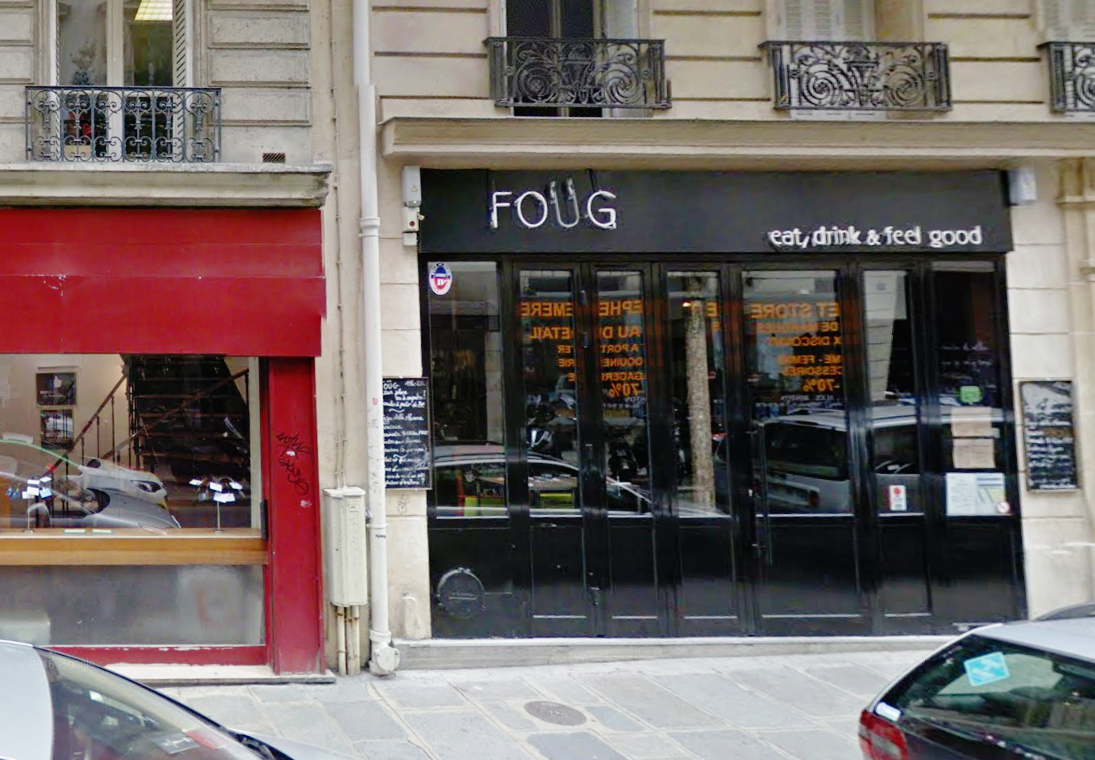
Let's start the experiment again: yet another name!
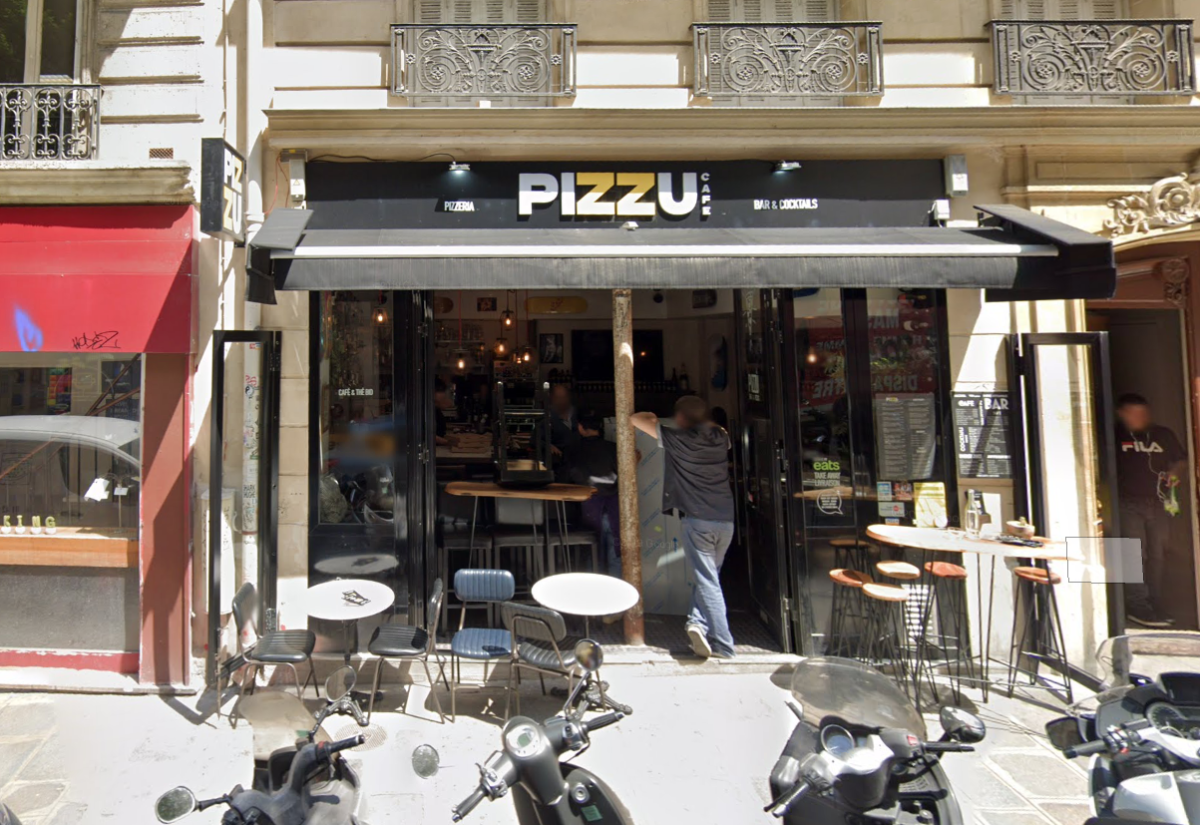
Google Street View seems accustomed to this kind of tear in the space-time continuum, Shhhh!!! dates from 2013, Foug from 2016, Pizzu from 2019. To avoid ending up like Orpheus, changed into a statue of salt for having looked backward, we decide to continue our journey with our gaze now always focused forward. The turnover of businesses is high in the Marais, it can make you dizzy. Long live Pizzu, rather well rated on Trip Advisor.
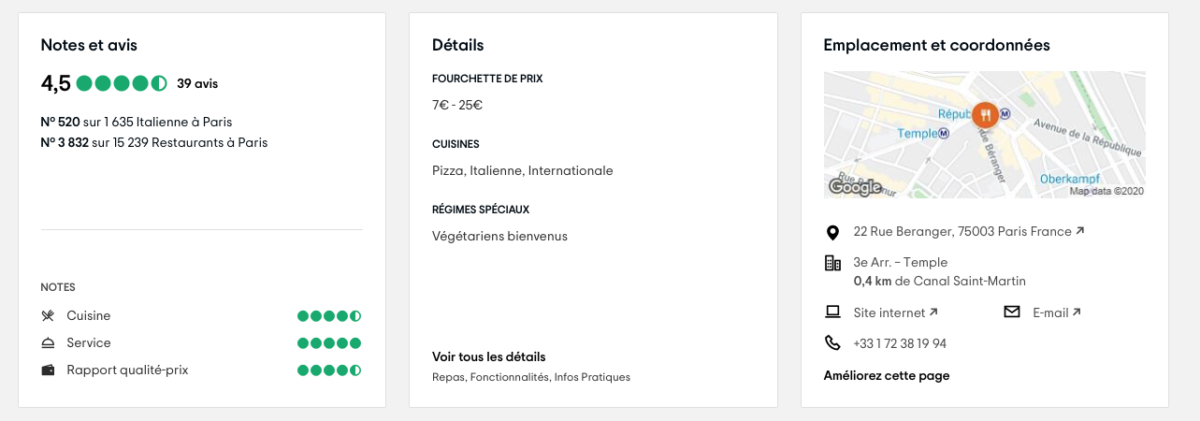
A little further on, the entrance to Passage Vendôme which we cannot visit because it is pedestrian. The homeless person that we can see in the shadows immediately makes us think of Balzac's work where the theme of poverty in Paris is omnipresent. Rue Béranger also appears in “Lost Illusions”. Coralie and Lucien de Rubempré, central characters in the novel, lived on this street, then called rue Vendôme, before being forced by poverty to look for a cheaper apartment. At the time, the Marais was poor, of course, but other neighborhoods were even lower on the social scale.
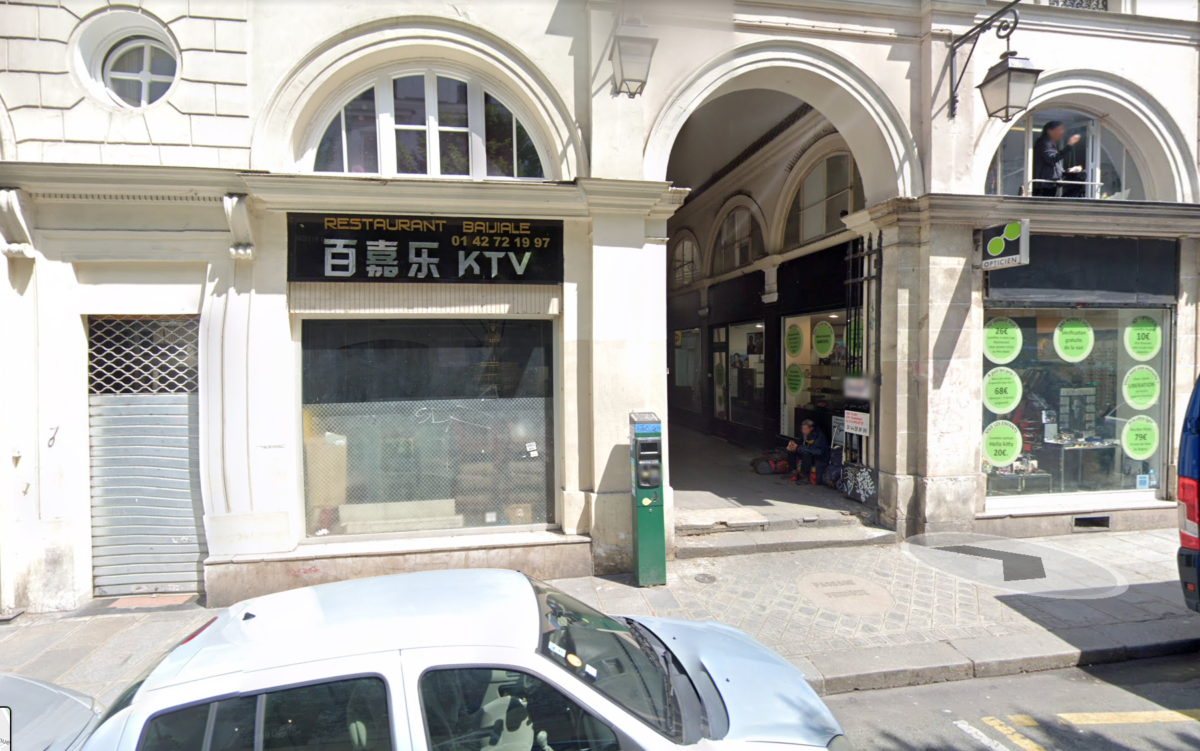
Let us pass this passage, with regret, because it will remain secret for Google Street View. On the first floor, a young woman watches this ghost pass through a beautiful half-moon window.
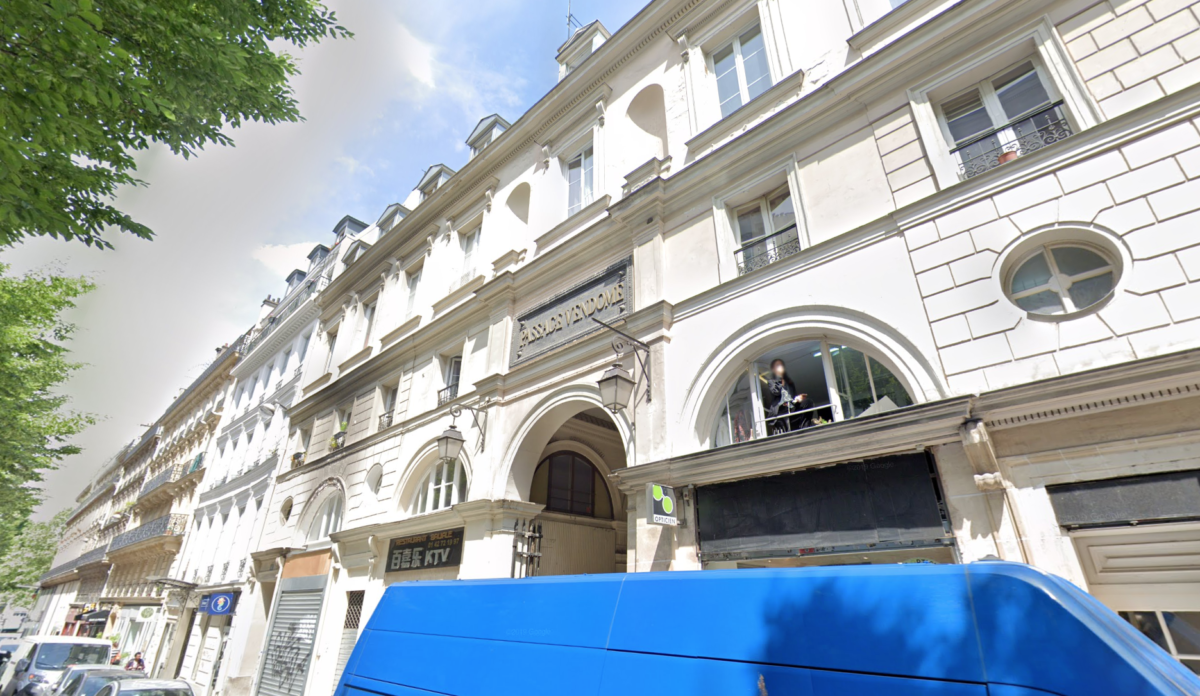
Google's Gaussian blur combined with the light from what must be his smartphone illuminates his face with a strange halo. Foreshadowing a surgical mask?
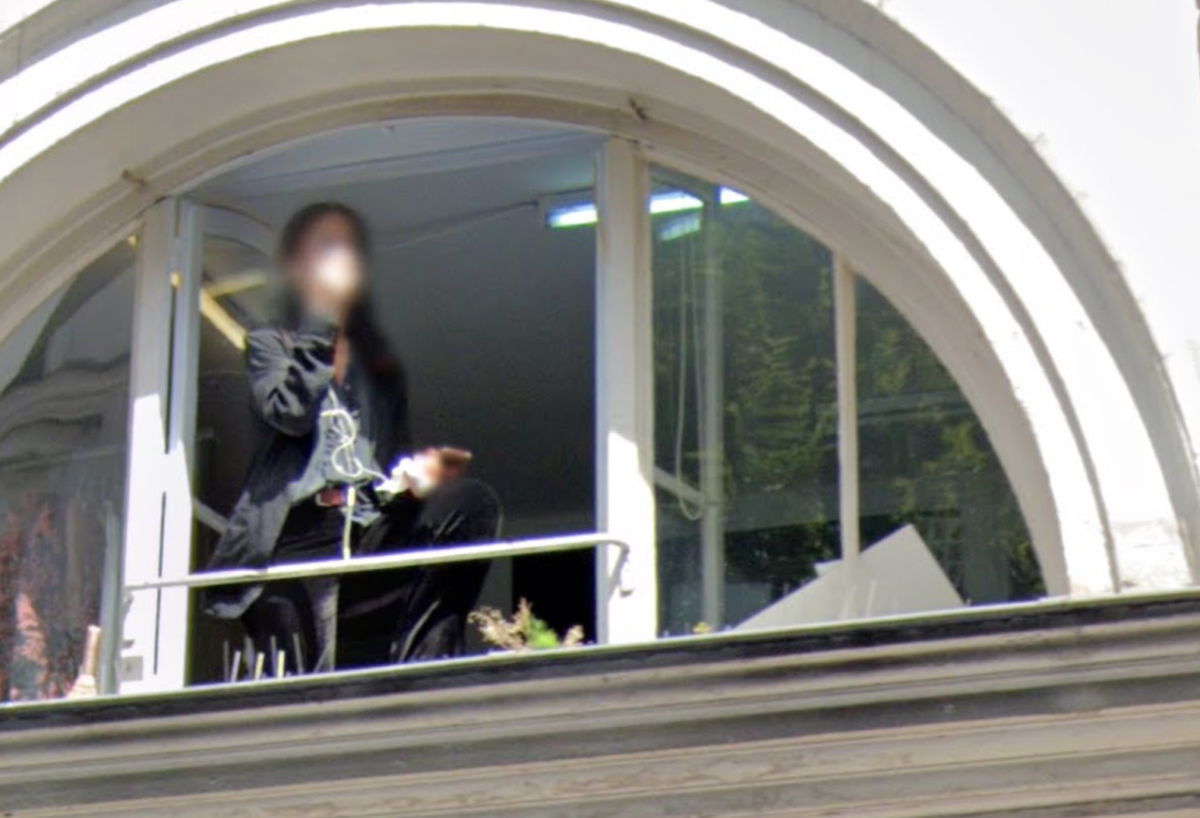
At 16, who can imagine that until the Revolution there was the convent of the Filles-du-Sauveur founded in 1701 to help repentant bad girls.
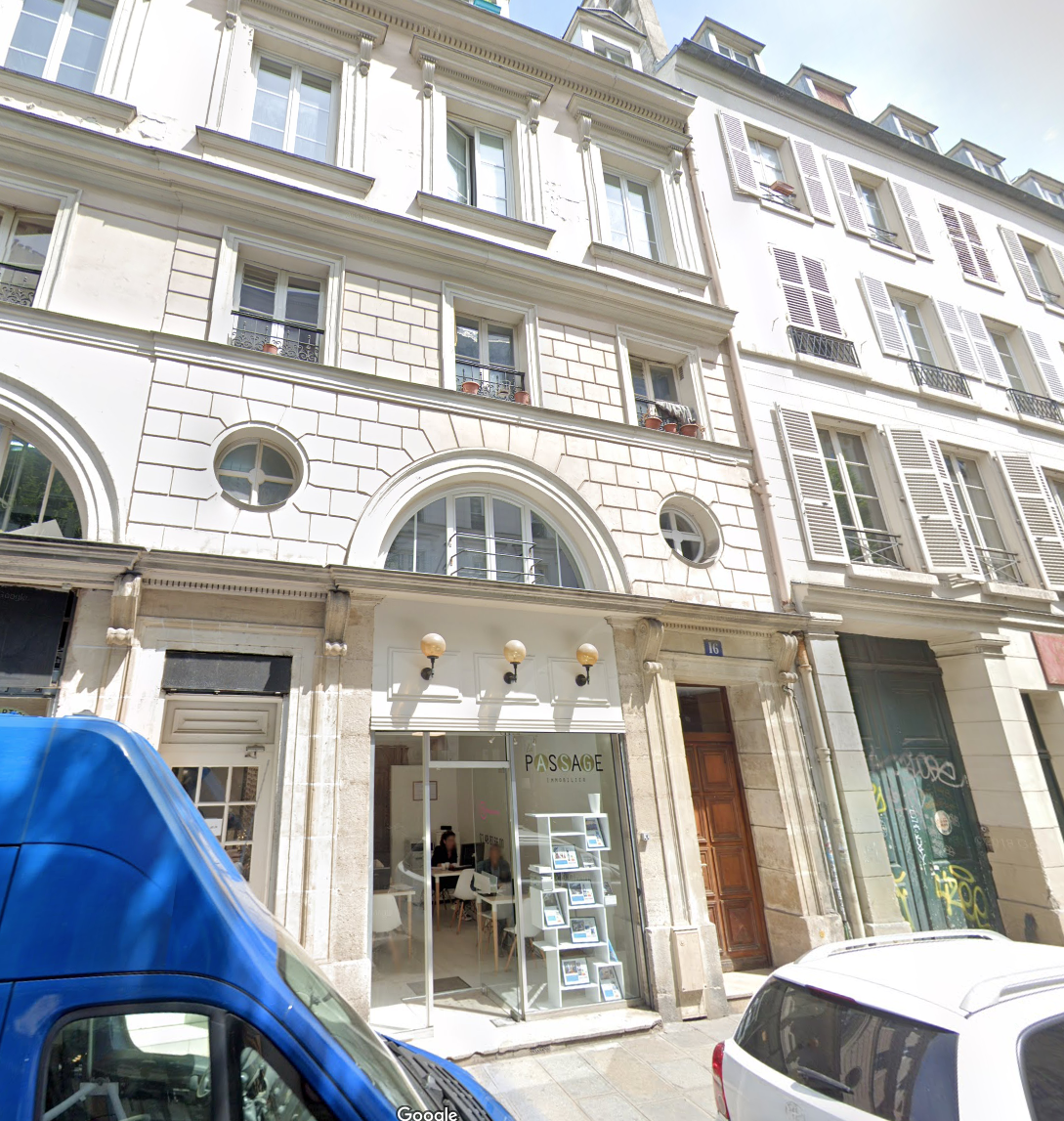
At 14 there was a tennis court (the ancestor of tennis), that of the Comte d'Artois, built in 1780 on a plot of the neighboring convent of Filles-du-Sauveur by the architect François-Joseph Bélanger. Demolished in the middle of the 1851th century, it gave way, in XNUMX, to Déjazet theater whose entrance is at 41, boulevard du Temple. On the faded calico we can read “Administration”. But is it also the entry for artists?
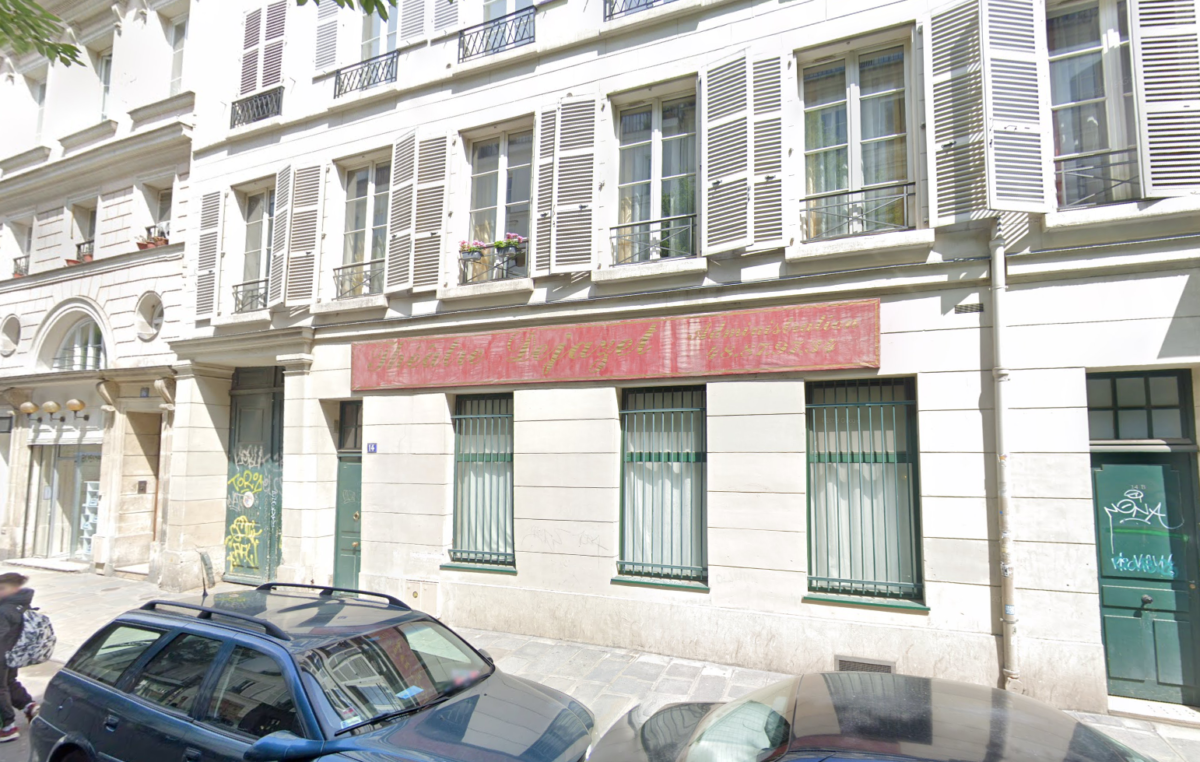
At number 11 was the Hôtel Bertier de Sauvigny, which became the town hall of the former 1987th arrondissement, created under the Directory. The building was destroyed and an ugly nine-level parking garage was built. The last five levels were then converted into offices and were occupied by the newspaper Libération, from 2015 to XNUMX.
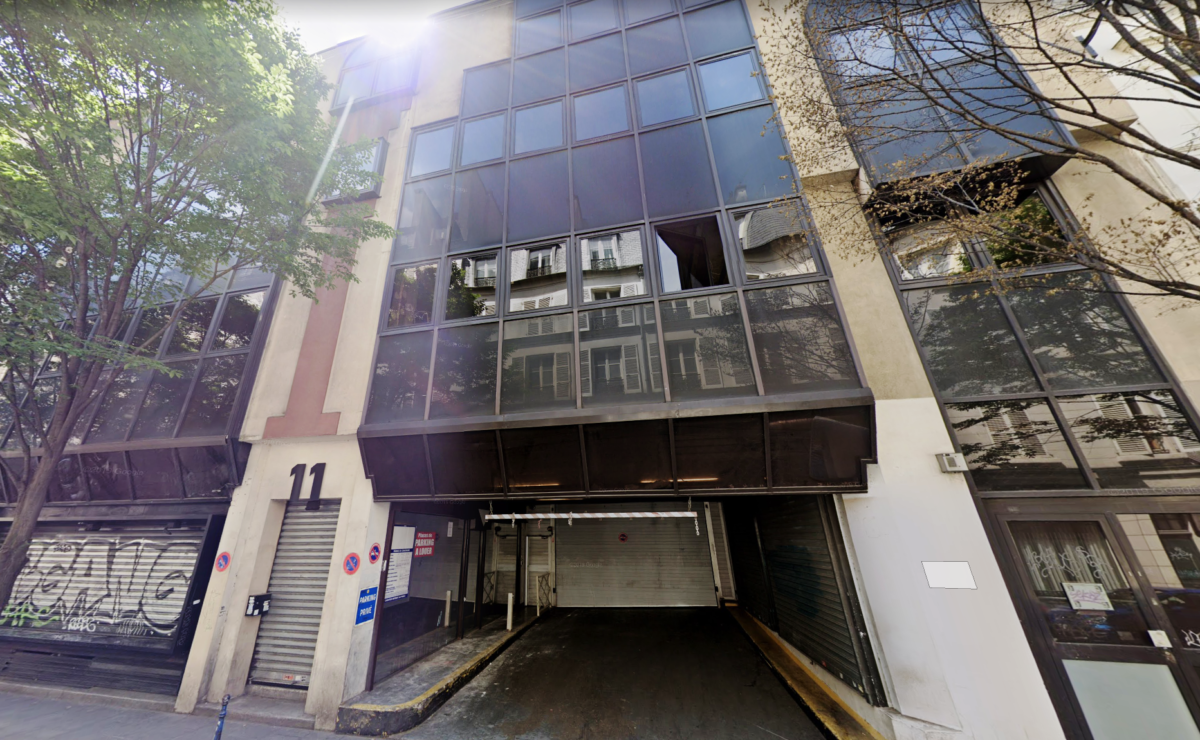
At 5 is the former home of Pierre-Jean de Béranger (1780-1857), a prolific singer, very popular in his time who gave his name to the street.
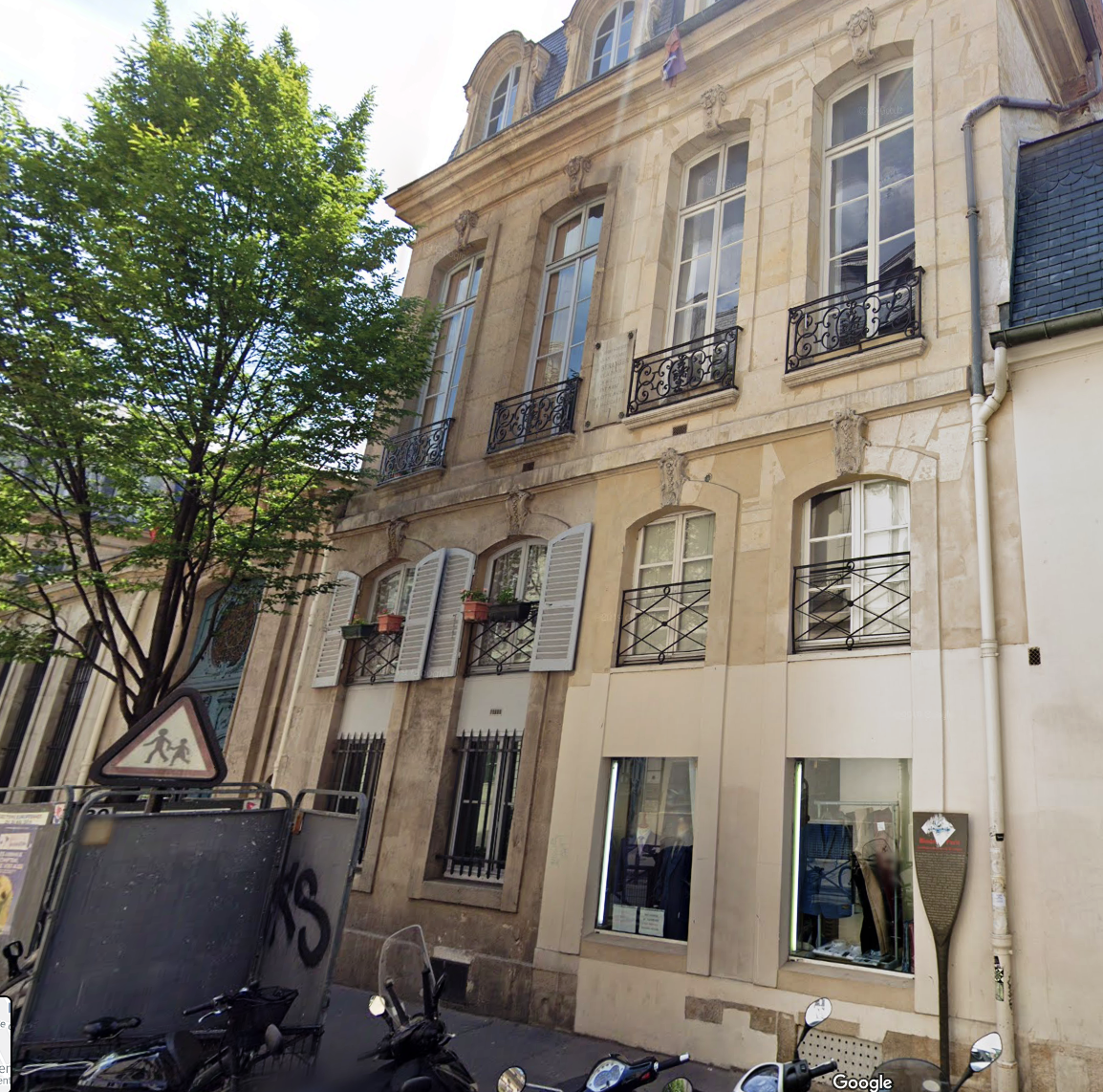
Let’s let the “Starck train” installed by the city of Paris give us the details.
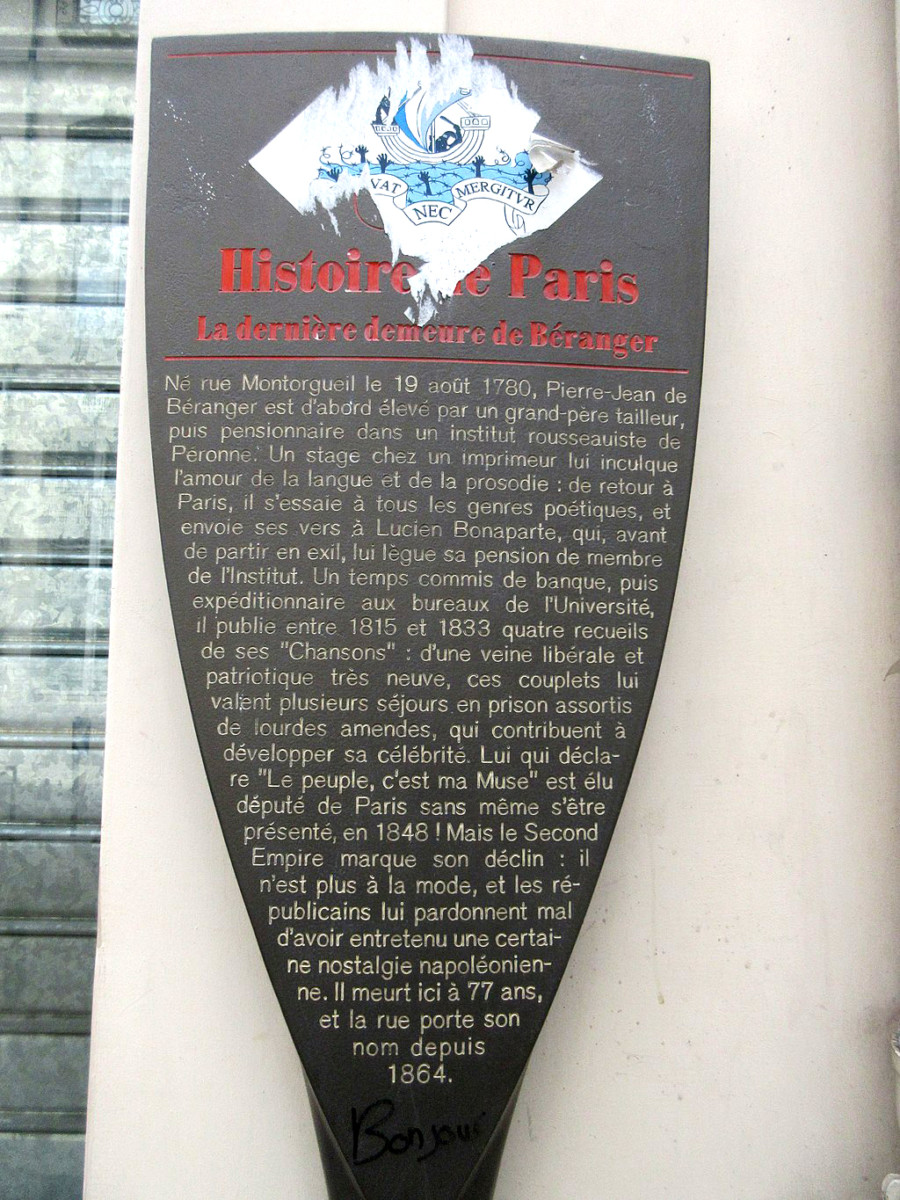
At number 3, the primary school houses voting stations for Europeans that day. A passerby seems torn, not to say torn, between the Loiseau list and the Lagarde list.
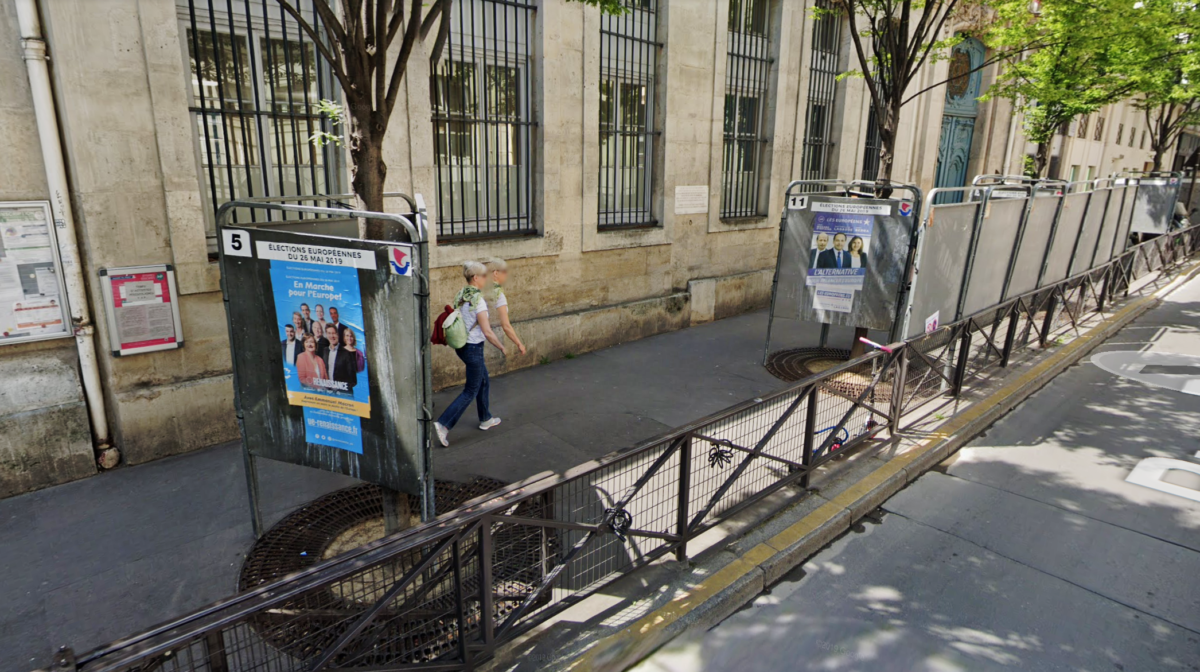
We arrive at number 2 rue Béranger, where the Fargès hotel, also known as the Mascrani hotel, is located, built between 1720 and 1727 by Gillet de la Chaussée. During the French Revolution, the hotel was the headquarters of the Food Administration.
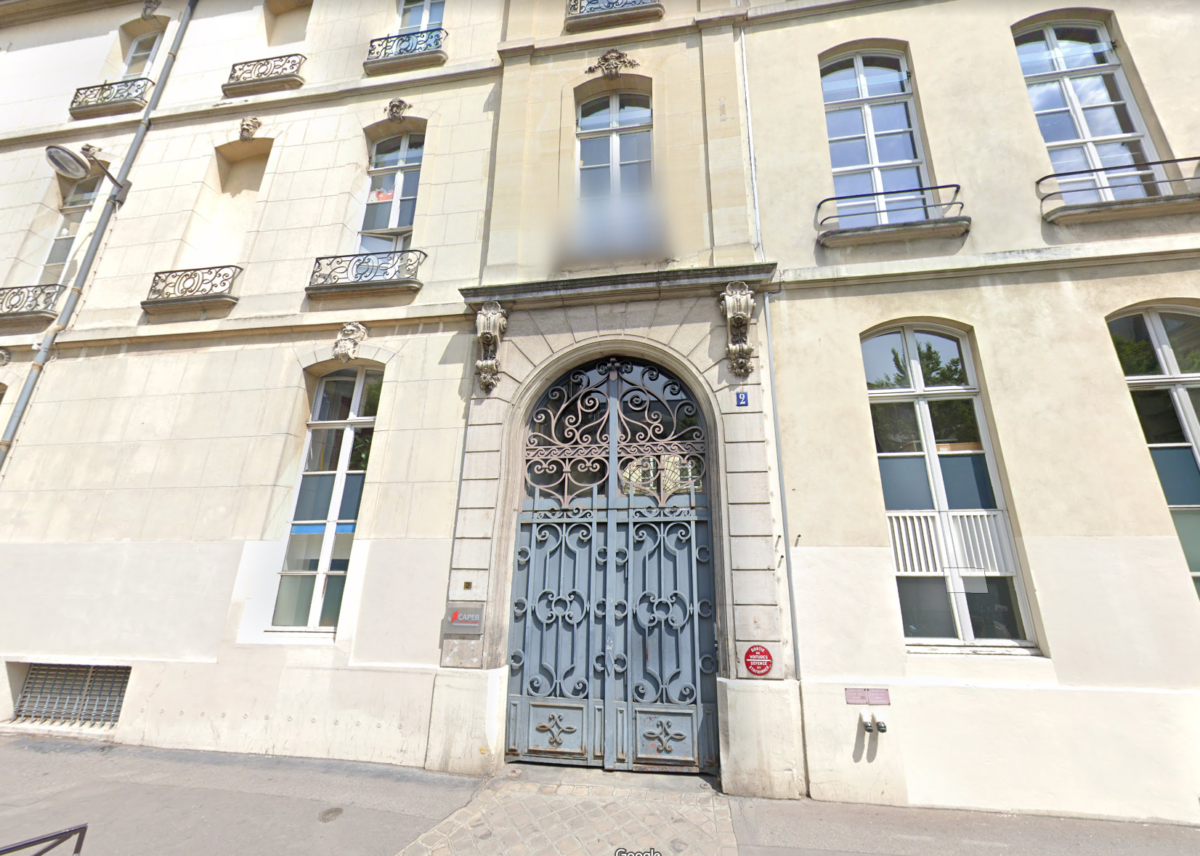
Next episode: rue Charlot.
Text: Djiefsi
03.05.20
FOR PASSIONATES OFUS
Juliette Drouet actress, muse and mistress of Victor Hugo
At 14 rue Sainte-Anastase, from 1836 to 45 and at 12 from 1845 to 48, a few hundred meters from Place des Vosges, lived the muse and lover of Victor Hugo, Juliette Drouet née Julienne Gauvain.
Rue Vieille-du-Temple: the fabulous construction site restarts
A luxury hotel will be created at the end of the work. On the ground floor, the old stables and carriage houses will house the restaurant on the large courtyard, while the first courtyard, on rue Vieille-du-Temple, will feature two businesses continuing its 19th century layout.
The Marais festival, a fabulous story
The Festival du Marais dates back to a time that those under 60 cannot know. However, this leading artistic event was for a long time one of the most popular cultural events in the capital. For a quarter of a century, from 1962 to 1987, this unique festival…
NOW ON THE MOOD MARSH
The best tattoo parlors in Marais
Tattooing, an age-old practice, has long been the prerogative of convicts, dock workers, the underworld and sailors. Although it has become democratized, now affecting all profiles and concerning one in five French people, including 16% women compared to 10% men, it still remains taboo due to its definitive and transgressive nature.
Juliette Drouet actress, muse and mistress of Victor Hugo
At 14 rue Sainte-Anastase, from 1836 to 45 and at 12 from 1845 to 48, a few hundred meters from Place des Vosges, lived the muse and lover of Victor Hugo, Juliette Drouet née Julienne Gauvain.
Piccola Mia, the pizzas of the Republic
On the Place de la République, a brasserie with Italian accents has just opened, which quickly made people forget the old Pizza Pino. Welcome to Piccola Mia, the fruit of the joyful encounter between Italian chef Denny Imbroisi, pizza chef Julien Serri and mixologist Matthias Giroud who creates a creative cocktail menu.

